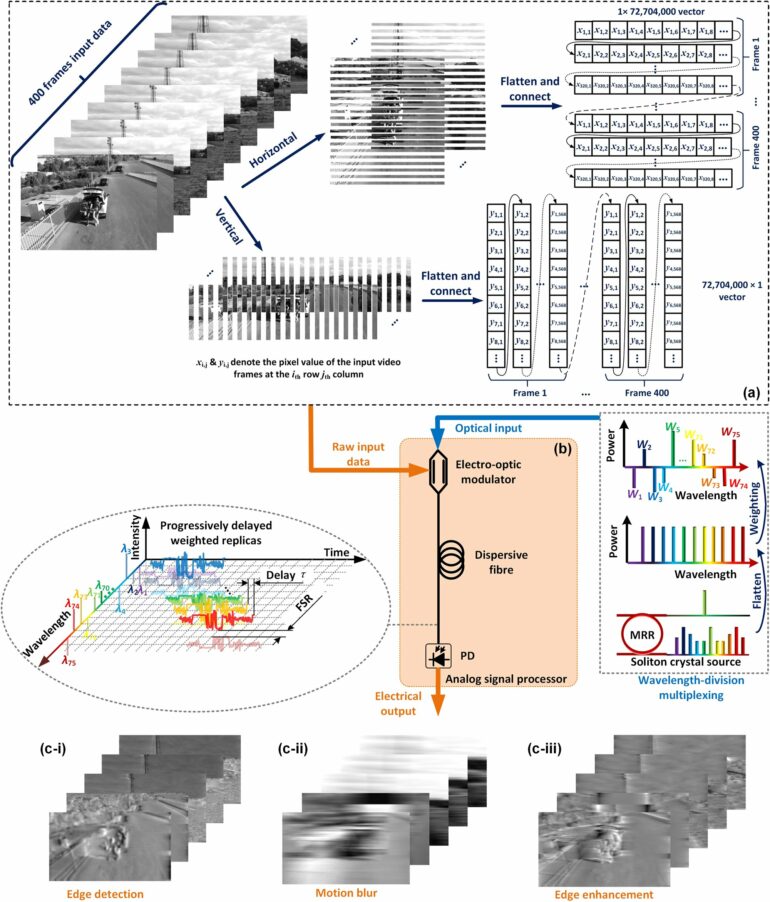A team of international scientists have developed an ultra-high speed signal processor that can analyze 400,000 real time video images concurrently, according to a paper published in Communications Engineering.
The team, led by Swinburne University of Technology’s Professor David Moss, have developed a processor that operates more than 10,000 times faster than typical electronic processors that operate in Gigabyte/s, at a record 17 Terabits/s (trillion bits per second).
The technology has profound implications for the safety and efficiency of driverless cars, medical imaging and could help find habitable planets beyond our solar system.
“This is a game-changer,” says Moss. “These are portable, ultra-precise optical rulers that could be used for everything from handheld breath scanners to detecting small movements of objects in space or finding Earth-like exoplanets.”
The processor’s efficiency and speed will have a major impact on artificial intelligence (AI), machine learning and robotic vision. The ability to process vast amounts of data in real-time will lead to more intelligent, autonomous robotic systems that can operate efficiently in real-world environments.
In astronomy, for example, processing large volumes of celestial data at unprecedented speeds will support groundbreaking discoveries. This approach will also accelerate functions of medical imaging and autonomous vehicles.
“All real-time analysis and decision-making requires ultrafast analysis of video images for everything from autonomous driving to artificial intelligence in order to detect and analyze objects.”
“The secret to its remarkable performance lies in the integrated optical microcomb, which overcomes the bandwidth and energy limitations inherent in electronics,” says Moss.
Moss says this photonic signal processor is not just a technological marvel—it’s a harbinger of a future where high-speed, efficient data processing shapes every aspect of our lives.
“From transforming transportation and health care to opening new doors in space exploration and AI, the impact of this technology will be profound and far-reaching.”
More information:
Mengxi Tan et al, Photonic signal processor based on a Kerr microcomb for real-time video image processing, Communications Engineering (2023). DOI: 10.1038/s44172-023-00135-7
Provided by
Swinburne University of Technology
Citation:
New ultra-high speed processor to advance AI, driverless vehicles and more (2023, December 21)



